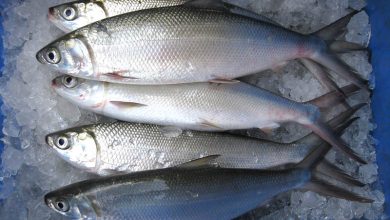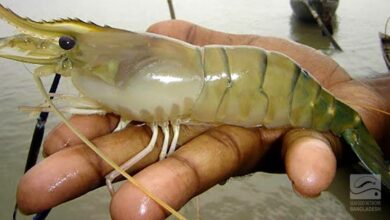
Since seafood contains relatively little connective tissue, it is very delicate, easily digested, and suitable for consumption by people of all ages. As a result, it is normally advised to eat seafood at least twice a week, and because of its many health advantages, people are generally encouraged to do so. They are abundant in vital amino acids and have high-quality proteins. Additionally, they are substantial providers of n-3 polyunsaturated fatty acids (PUFA), which have been shown to lower the risk of cardiovascular illnesses and support healthy neurodevelopment in kids. Chronic Heart Disease (CHD) is a global health issue that affects a significant number of people. CHD is prevented by omega-3 fatty acids because they have anti-inflammatory, antithrombotic, and antiatherogenic properties.
The term “seafood poisoning” describes symptoms brought on by eating tainted seafood. Toxins, viruses, bacteria, and parasites are a few examples of contaminants. In general, consuming hot, completely cooked food helps prevent foodborne illness, sometimes known as food poisoning. Cooking does not, however, shield you against some foodborne illness infections that can be contracted from fish. It’s critical to recognize the variety of dangers connected to seafood consumption because these illnesses can cause anything from minor discomfort to situations that could be fatal.
Potential hazards and Prevention of Seafood Consumption:
The following are the main risks that ingesting seafood may pose to human health:
- Extreme Allergies
- Mercury Toxin
- Accumulation of Microplastics
- Food poisoning caused by parasites,
- Poisoning from shellfish such as ciguatera, aflatoxin etc.
- Histamine increasing
- Infections for bacteria, fungus and viruses
- PCBs, BFRs, OCPs, microplastics and heavy metals
Bacteria:
Seafood may include bacteria such as Vibrio, Salmonella, and Listeria, particularly if it is handled improperly or not cooked enough. For example, the bacteria Vibrio grows best in warm water and can cause serious infections or gastroenteritis. Cooking or freezing fish before ingestion eliminates this risk.
Viruses:
As a food-related viral danger, rotavirus, hepatitis A, hepatitis E, and norovirus (NoV) are identified as the main hazards. Virus contamination of food is a serious problem since foodborne viruses typically defy processing or preservation techniques like acid, heat, pressure, dryness, UV, or radiation; disinfectants. Despite the fact that viruses are one of the main causes of foodborne illnesses, laws to reduce the prevalence of viruses in food are not routinely monitored. Ensuring control through legal frameworks and hygienic training for managers and staff in the food business is crucial to preventing viral transmission.
Toxins:
Certain seafood may include ciguatera, saxitoxin, or mercury. Larger predatory fish, such as swordfish and shark, contain mercury, which can cause neurological problems, particularly in young children and pregnant women. After ingestion, toxins build up in the tissues of shellfish and induce food intoxication in people. Within a few hours of ingestion, symptoms include diarrhea, vomiting, nausea, stomach discomfort, skeletal muscular paralysis, mild paralysis, gastrointestinal abnormalities, neurological issues, and cardiovascular issues. If consumed in larger doses, it can result in death and paralysis. One can enjoy seafood while reducing the likelihood of becoming a victim of its possible risks by using appropriate cooking methods and purchasing seafood from reputable suppliers.
Parasites:
Consumption of seafood varieties, such as raw or undercooked fish, may contain roundworms or tapeworms, which can cause intestinal diseases. The parasite larvae perish at roughly 60°C. Therefore, eating processed or adequately cooked fish usually carries no significant risk. When preparing raw or mildly marinated fish, it is advisable to freeze the fish beforehand. These larvae are resistant to chemicals, salt, marinating, and spices, however they perish in 24 hours at temperatures between -17 and -20°C.
Allergens:
In certain cases, allergies to seafood, such as shellfish, can result in severe reactions that could potentially be fatal, such as anaphylaxis.There are species-specific elements that contribute to spoiling. One of the primary causes of food allergies is seafood, particularly shellfish. The most well-known kinds of food allergies are those linked to immunoglobulin E (IgE).
The group of crustaceans that has been examined the most in relation to seafood allergy is shrimp.
Allergy reactions involve tropomyosin, arginine kinase, myosin light chain, and sarcoplasmic calcium-binding protein. Because it is thermostable and does not break down during digestion, tropomyosin has been identified as the most important allergen associated with shellfish. Because arginine kinase is volatile, it is the cause of respiratory disorders in humans. The only option available to those who have a shellfish allergy is to avoid eating it since there is no proven cure. Immunotherapy may be able to treat allergies like peanut or egg allergies, but nothing is known about how to treat shellfish allergies.
Histamine:
Histidine is abundant in fatty fish including tuna, mackerel, sardine, bonito, and anchovies. When these species are subjected to unfavorable temperature conditions during storage or transit, histamine may build up. As a result, keeping the cold chain intact is crucial for processing, storage, and transportation. The enzyme known as histamine decarboxylase is produced by the microbial community present in fresh fish. Because histamine poisoning doesn’t show any obvious signs of spoiling, it poses a risk to consumers. Blood vessel dilatation, hypotension, flushing, itching, and headaches are possible side effects.
Heavy metals, BFRs, PCBs, and OCPs and Microplastic:
Anthropogenic activities are causing pollution levels in the environment to rise, with heavy metals being the main pollutants in water supplies. Even in very small amounts, several trace elements have the potential to be poisonous and extremely detrimental to human health, even though many of them are necessary biological molecules. Fish contamination by microplastics is predicted to become an increasingly serious issue in need of resolution. These could build up in fish and shellfish and make their way down the food chain to humans. However, when high amounts are metabolized, they may result in diseases including liver and kidney damage.
Growing agricultural activity causes both organic and inorganic toxins to pollute the environment. Long-distance atmospheric movement is said to be a crucial component in the build-up of pollutants, in addition to local emissions.
The maximum levels of hazardous components allowed to be present in fish or shellfish are specified by a number of national and international recommendations. To assess the safety of fish and shellfish, it is necessary to keep an eye on whether the trace element concentrations found in edible muscles above this threshold. However, the amounts of fish consumed may fluctuate greatly across nations due to differences in eating patterns. Therefore, the risk of consuming seafood that contains heavy metals and microplastics varies depending on the society, and when evaluating the health hazards for various groups, consumption levels should also be taken into account.
Farhana Islam
Agriculturist, Researcher
Fisheries Resource Management, CVASU




